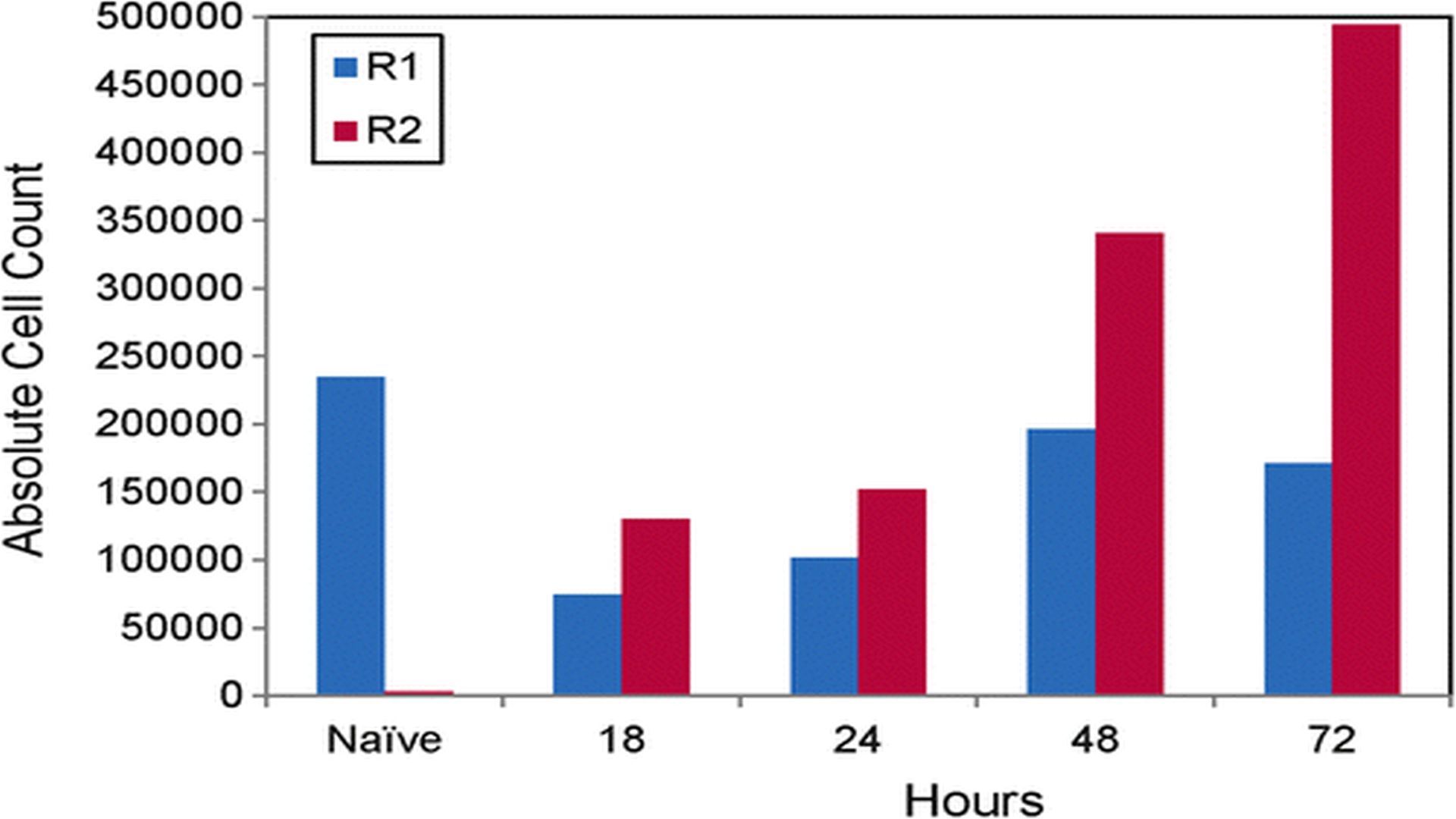Researchers Identify Immune Component Up-Regulated in Brain After Viral Infection
A new study of infection by a virus that causes brain inflammation and seizures in a mouse model has shown increased levels of complement component C3. The C3 was produced by immune cells in the brain called microglia within the first few days after infection. C3 showed the greatest increase in expression in the brain compared to a variety of other complement components, cytokines, chemokines, and antigens measured in the study that is published in Viral Immunology, a peer-reviewed journal from Mary Ann Liebert, Inc., publishers.


Cell counts for ramified microglial (R1) and infiltrating macrophage/activated microglial (R2) cell populations. Absolute R1 and R2 cell population counts obtained during sorting of cells isolated from naive mice and mice from the 18, 24, 48, and 72 h time points (20 mice per group) are shown.
A new study of infection by a virus that causes brain inflammation and seizures in a mouse model has shown increased levels of complement component C3. The C3 was produced by immune cells in the brain called microglia within the first few days after infection. C3 showed the greatest increase in expression in the brain compared to a variety of other complement components, cytokines, chemokines, and antigens measured in the study that is published in Viral Immunology, a peer-reviewed journal from Mary Ann Liebert, Inc., publishers.
Jane Libbey, Matthew Cusick, PhD, Daniel Doty, and Robert Fujinami, PhD, University of Utah School of Medicine, Salt Lake City, coauthors of the article entitled "Complement Components Are Expressed by Infiltrating Macrophages/Activated Microglia Early Following Viral Infection," reported that while C3 production by microglial cells increased in the brain, levels of C3 or other complement components were not higher in the blood. This suggests that the microglial immune response to the virus infection was localized to the brain. These new findings add to the researchers' understanding of how increased expression of certain immunologic factors contribute to the development of neuroinflammation and seizures following viral infection in this mouse model.
"The Fujinami laboratory is making great strides in our understanding of the host response to infection in the brain. The spotlight on C3 will help researchers identify the mechanisms that underlie the development of neuroinflammation and seizures following viral infection " says David L. Woodland, PhD, editor-in chief of viral immunology and chief scientific officer for Keystone Symposia on Molecular and Cellular Biology.
Research reported in this publication was supported by grants from National Institutes of Health under Award Numbers 1S10RR016802-01 and T32AI055434. The content is solely the responsibility of the authors and does not necessarily represent the official views of the National Institutes of Health.
Source: Mary Ann Liebert, Inc./Genetic Engineering News
2 Commerce Drive
Cranbury, NJ 08512